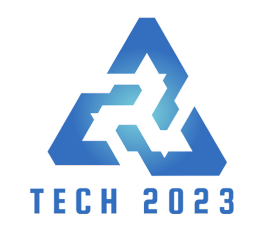As technology rapidly advances, the world of coding changes with it. With new programming languages emerging and existing ones constantly being updated, it’s important for developers and programmers to stay ahead of the latest trends. The future of coding is exciting, but which major languages should you focus on? Which programming languages will be most in demand in 2024?
In this article, we will delve into these questions and examine the top ten programming languages that will dominate in 2024.
Despite their varying syntaxes and makes use of, all programming languages proportion one not unusual purpose: they permit us to communicate with computers and educate them on how to carry out unique tasks. From growing attractive websites and cell apps to developing systems and getting to know algorithms for artificial intelligence (AI), studying a numerous array of programming languages can open up limitless possibilities.
So why is it important for programmers or anyone interested in venturing into the world of scripting to learn these highly sought-after programming languages? Here are some of the main reasons:
Career Development: Technology companies are always looking for experienced programmers with a strong understanding of multiple scripting languages. By mastering this highly sought-after skill, you can increase your chances of getting a job.
Versatility: Every language has its strengths and weaknesses. Finding the right language for a specific task can save time and resources.
Future-demonstrate your skills: As technology rapidly evolves, staying abreast of current trends will keep your skills up to date.
Read More: The Future of Finance: How AI is Revolutionizing the Banking and Investment Sectors
Top 10 High-Demand Programming Languages for 2024
Python’s popularity continues unabated due to its readability, simplicity, and versatility across domains like web development or data science - making it an ideal first language for beginners while still offering plenty of depth professionals need too!
JavaScript
Not only does JavaScript power most interactive elements on web pages but it’s also used in server-side programming. Its versatility and constant updates ensure its place on the list of high-demand languages.
Java
Java has been a mainstay in the programming world for decades. Primarily used for building enterprise-scale applications, it’s favored by large organizations due to its stability and scalability.
C#
C# (pronounced C Sharp) is a multi-purpose language developed by Microsoft and used extensively in game development (thanks to Unity3D), Windows desktop applications, and VR technologies.
Swift
If you’re interested in mobile app development, particularly for iOS devices, then Swift should be your go-to language. Developed by Apple Inc., Swift is faster and safer than its predecessor - Objective-C.
Kotlin
Kotlin has become the preferred language for Android app development since Google officially endorsed it as an alternative to Java. Its seamless interoperability with Java makes transitioning between the two languages smooth.
Rust
Rust is gaining momentum among developers due to its emphasis on speed and memory safety - especially concerning concurrent programming where tasks are done simultaneously.
TypeScript
TypeScript, a superset of JavaScript with static typing added, offers enhanced code quality & tooling capabilities making it increasingly popular among front-end developers.
R
R holds a special place among data scientists or statisticians due to its extensive set of packages ideal for data analysis & visualization.
Go
Go (or Golang) developed at Google is known for simplicity & efficiency making it ideal when working with distributed systems or concurrent tasks.
FAQs about High-demand Programming Languages
1. Is knowing multiple programming languages really necessary?
Yes! Each language serves different purposes better than others based on their design principles so having multiple tools under your belt can never hurt!
2. How long does it take to learn these coding languages?
The time invested depends largely upon individual dedication levels but typically speaking, one could pick up the basics within a few months.
3. Which is the best programming language for beginners?
Python is often recommended as a great starting point for beginners due to its simplicity and readability.
4. Are these high-demand languages hard to learn?
Some might have steeper learning curves than others (like Rust or C#). However, with persistence and practice, they are all manageable.
5. What resources can I use to learn these programming languages?
Online coding bootcamps (like Codecademy or Le Wagon), MOOCs (Coursera, Udacity), YouTube tutorials, and coding challenge websites (like HackerRank) are great starting points.
Conclusion
The world of programming continues to evolve, driving demand for new skill sets in the future job market. Learning one or more of the top 10 high-demand programming languages we’ve listed can be an excellent way to future-proof your skills and open up new career opportunities in 2024!





